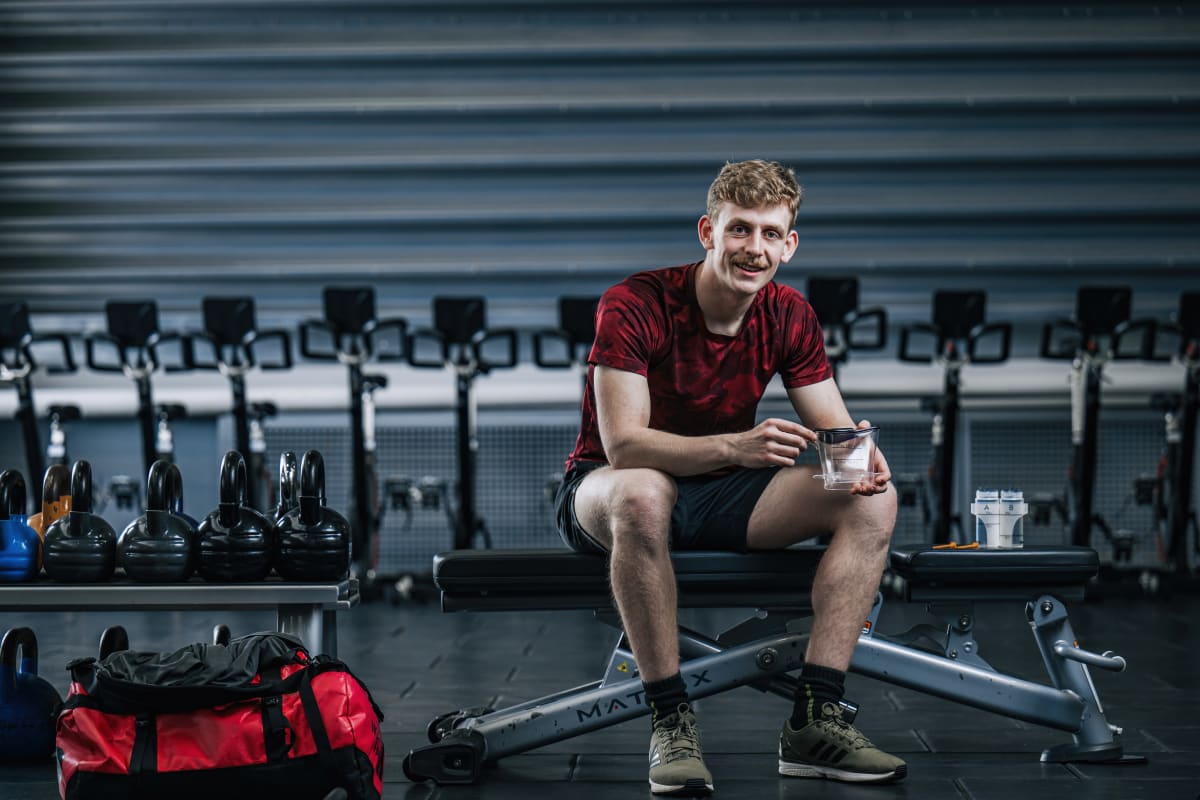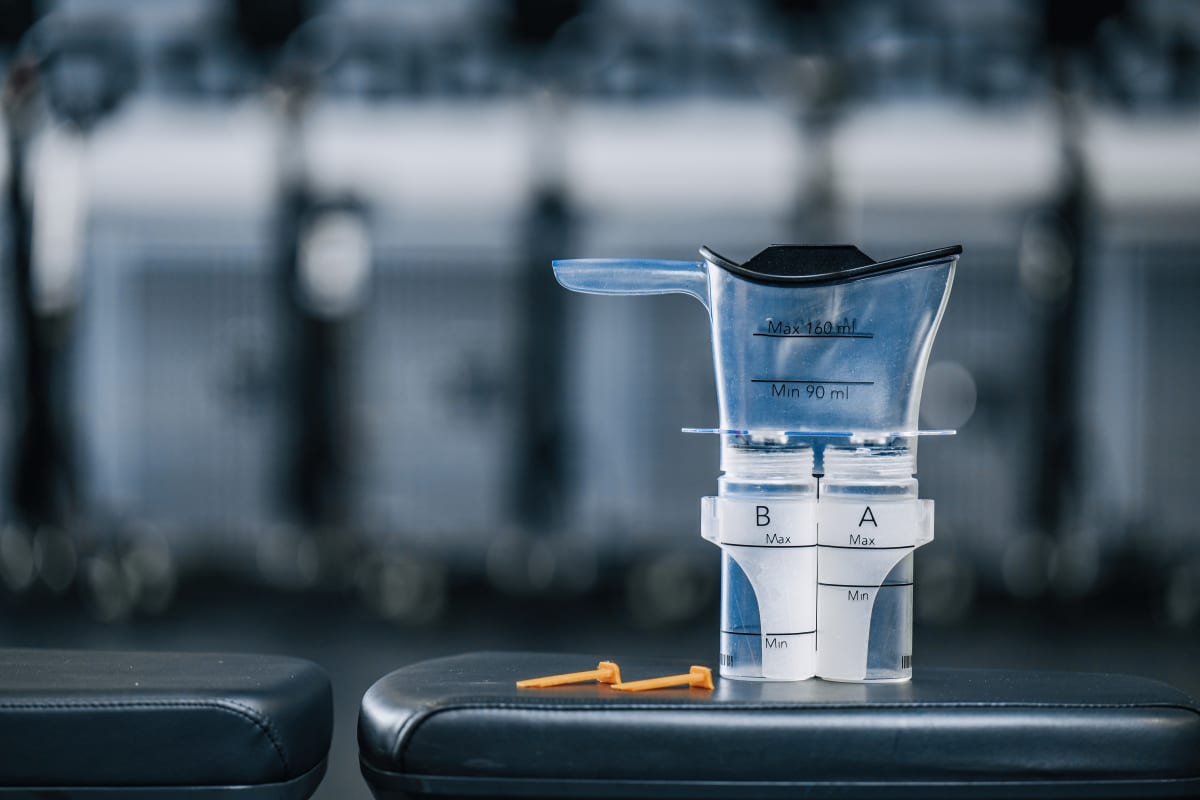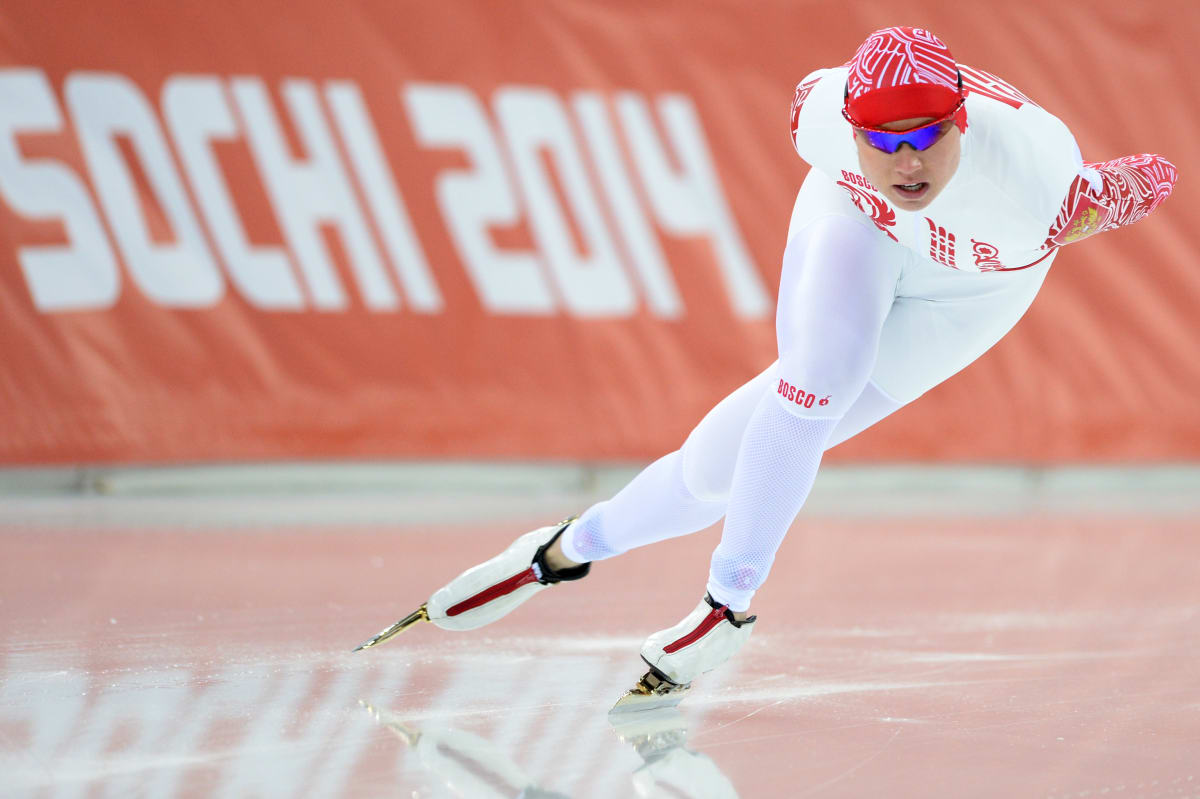
Putting the needs of female athletes at the forefront, an award-winning inventor could change the game in urine drug testing in sport, Suzanne McFadden writes.
It’s arguably the most intimidating and uncomfortable part of being a top athlete – especially if you’re female.
Naked from the nipples down to the knees, having to pee into a small cup in the clear vision of anti-doping officials.
“As a woman, it’s much harder,” says Kiwi javelin thrower Tori Peeters. A silver medallist at this year’s Diamond League final, Peeters is having to provide more urine samples for drug testing as she competes more often on the world stage.
“It’s really awkward when you’ve got two people watching you pee - for the first few times I got stage fright. Half the time, you pee on your hand. And there have been so many times I’ve missed, or not put enough in the cup – and then had to sit and wait till I could do it all again.
“For people who aren’t confident about their bodies, it’s a really anxious thing to do.”
But this is where a young Kiwi inventor could make the experience less messy and distressing, having designed an award-winning drug testing kit aimed at improving the experience for athletes – especially for women and Para athletes.
And he has the support of Drug Free Sport New Zealand, who want to take his Pre-Podium design to the anti-doping world.
“What we really liked about it is, for the first time, the design is centred around the athlete, which doesn’t currently exist in anti-doping,” says Nick Paterson, chief executive of New Zealand’s anti-doping agency.
“The potential for this to be a game-changer is genuine.”

That’s what Nick Holland, 22, was aiming for in his final year as an industrial design student at Massey University. Looking for a design project, he was inspired by a conversation with a flatmate – an athlete who’d been drug tested.
“He told me about how unpleasant the experience had been,” Holland says. “I realised it was such a good area to look into, something that’s a real problem that I could actually solve.”
Holland’s design was this year’s national winner of the James Dyson Award, celebrating the next generation of design engineers. He received $9500 in prizemoney to develop the product further.
He’s now been selected in the global 20 shortlist for the worldwide James Dyson Award, with the winner - named on November 15 - collecting a further $57,000.
Holland began the Pre-Podium project by learning about the drug testing process, which has been under scrutiny in recent years following the major Russian doping scandal at the 2014 Sochi Winter Olympics.
He wanted to hear personal stories, so embarked on a series of interviews with male and female athletes and anti-doping officials from Drug Free Sport NZ (DFSNZ) describing the process.
“That’s where I got the insights about how it’s really unpleasant for women,” says Holland, who was a premier club hockey player in Wellington. “I’d like to say I knew about the issues beforehand, but in all honesty I didn’t. It’s out of sight, out of mind.”
The initial ideas came after brainstorming with athletes, then Holland spent a lot of time developing and prototyping to see what would work best.
Right now, athletes around the world provide a urine sample in a collection vessel that’s usually a cylindrical cup. The athlete then takes the cup to a testing station table, where they pour their pee into two small bottles, marked A and B, and then seal them.

The shape of the collection vessel in the Pre-Podium design is more ergonomic, to better fit a woman’s body - meaning fewer spills and easier collection. The vessel is locked in place on top of two bottles, and the urine drained by pressing tabs on the vessel, preventing any further mess.
“Getting the shape right for women was quite challenging. It’s obviously not something I can test myself,” says Holland. He looked at female urination devices like the Shewee, and some of his female uni peers tried out his prototypes.
“The design will make the process less stressful. It won’t fix every problem, but I think it’s a step in the right direction, by removing one of the elements that’s really unpleasant and uncomfortable,” he says. “More importantly it might give some women more confidence to keep playing sport at a high level.”
Holland is now living in London and working for a design consultancy, where he’s working on a couple of projects for airlines.
He’s still finessing the Pre-Podium design, including making it more sustainable, before working on getting it to market.
That’s where Drug Free Sport New Zealand could help him. “We would be very happy - when he’s ready – to take this to the wider anti-doping community," Paterson says.
“We would absolutely help share this with the world, including WADA [the World Anti-Doping Authority]. Although it doesn’t take a stance on collection vessels, WADA issues the rules you have to comply with – like it must collect at least 90mls of urine, and it’s got to be tamper-evident.”
The sample bottles once used were thought to be tamper-proof – until Sochi, where steroid-tainted samples were passed through a hole in the wall of a Russian testing laboratory and switched with clean urine samples as part of a state-run doping programme. The bottles must now have a tamper-evident sealing system, to show if a sample has been compromised.

What impressed Paterson most about Holland’s new design was that every step revolved around the athlete.
“The sample collection kit has always been designed with the national anti-doping agency and WADA in mind. Not on that list at any time has it been for the athlete – who is actually our customer,” he says.
“A male athlete’s needs and a female athlete’s needs are quite different - so you have to consider everybody. It’s got better over the years since Sochi. There are other providers of sample collection kits where there’s been some athlete involvement. But I’m not convinced they were designed with the athlete in mind.”
Feedback from Kiwi athletes on the current system show it's often a confronting experience, and female athletes highlight the impracticalities and messy nature of it. But many high performance athletes also accept drug testing as part of their daily job, Paterson says.
“You’re being asked to be nude up to the nipples and down to the knees in front of another human being, to pass a urine sample. And that’s just part of your job,” he says.
“We don’t apologise for that, but we empathise as much as we can. We hear from Pasifika and Māori athletes that it’s particularly uncomfortable because of their culture.
“And we always empathise with our younger athletes coming through. If you’re a teenage girl going through menstruation, as well as body changes, and you’re asked to provide a sample, you’re not comfortable within your own self at that point. So that’s got to be pretty tough. Our responsibility is to provide people who can support the athlete through the process.”
That includes Para athletes, who Paterson says “tend to go from relative anonymity to high performance sport in a much shorter time – and suddenly they’re being drug tested. We want to make sure everyone has a good experience.”
Para cyclist Nicole Murray, who was named the world’s best female summer Para athlete this year, helped Holland to come up with the Pre-Podium design.

For now, urine remains the “gold standard” in anti-doping testing, even with the new, less-invasive dried blood spot testing - fully introduced at last year’s Beijing Winter Olympics.
Right now, urine tests make up 85 percent of the anti-doping testing in New Zealand, and blood tests 15 percent.
“Urine is the gold standard because you can do a full screening of tests. Blood is more complex,” Paterson says.
In the past 12 months, DFSNZ has brought in dried blood spot testing. A small collection tool sticks to the athlete’s upper arm, and microneedles prick the skin drawing blood spots onto blotting paper, which is then sent to the lab.
“In terms of invasiveness and time, it’s nothing – about two minutes,” Paterson says. “The paperwork still takes 20 minutes. But the issue is, the screening is not as wide as you get with venous blood and urine tests.”
Paterson just spent three weeks at the Asian Games in China, chairing an independent observers’ mission which randomly monitored all phases of doping control - with the goal of enhancing athlete and public confidence in major sporting events. And he knows there's worldwide contention around whether drug testing is actually worth the effort.
“Internationally, the whole anti-doping sector is returning 0.5 to 0.8 percent positive results in all tests done. You question is it worth it? How unsuccessful do you have to be before you stop doing it?” he says.
“But we don’t test people to detect doping, believe it or not; the primary reason is to deter people from doing it. So we have to keep doing it.”
* Drug Free Sport New Zealand will next year become part of the new Integrity Commission for Sport and Recreation, tasked with protecting and promoting the safety and well-being of participants and the fairness of competition in New Zealand’s sport and recreation sector.







